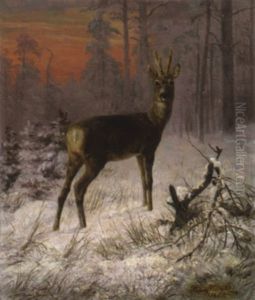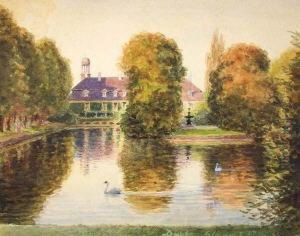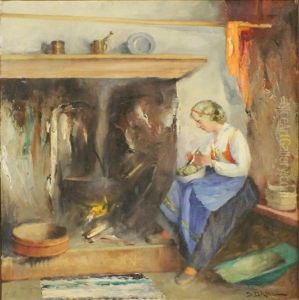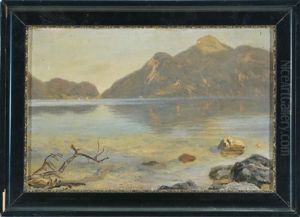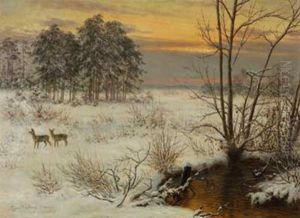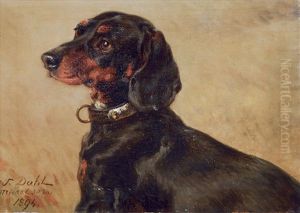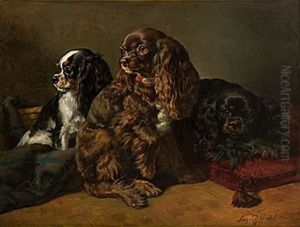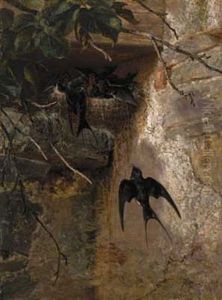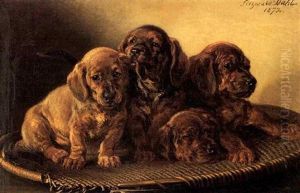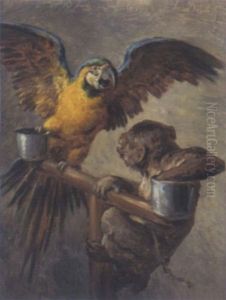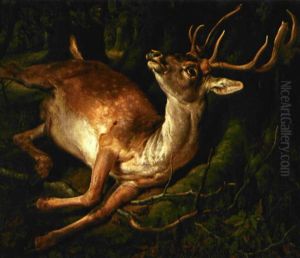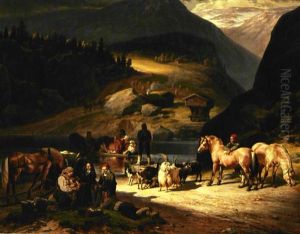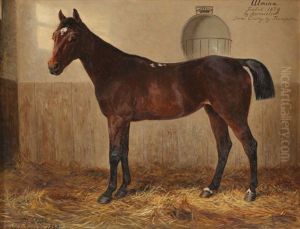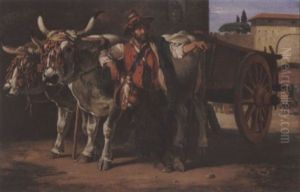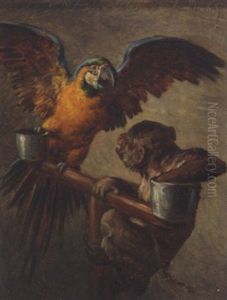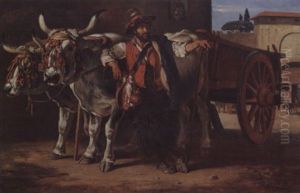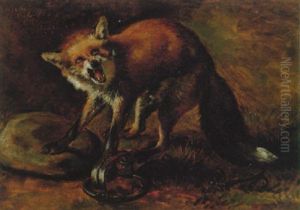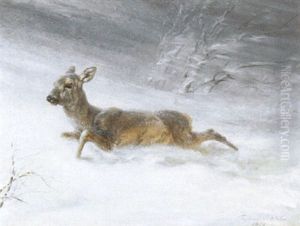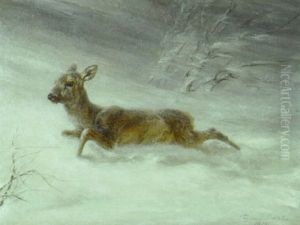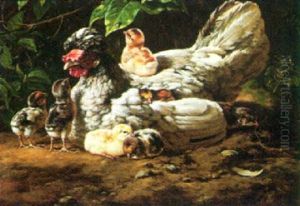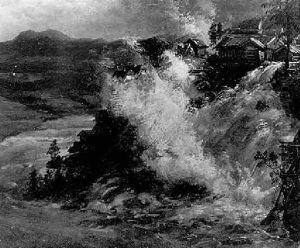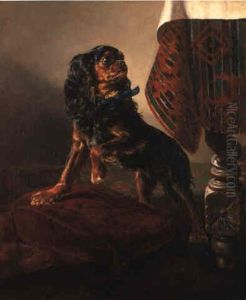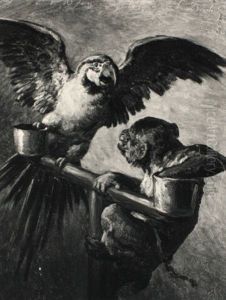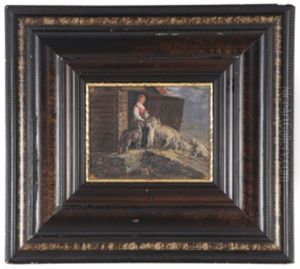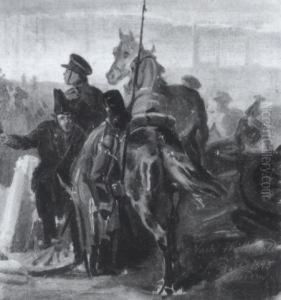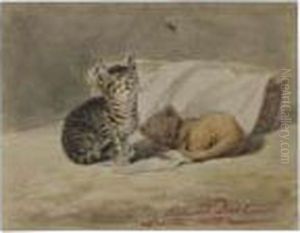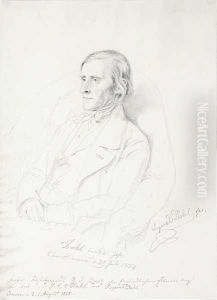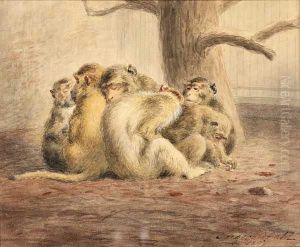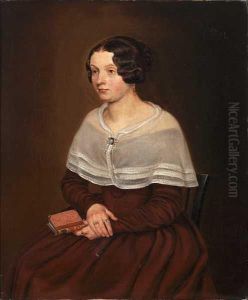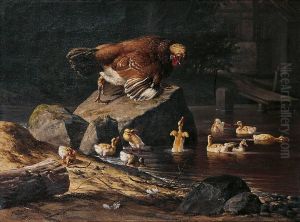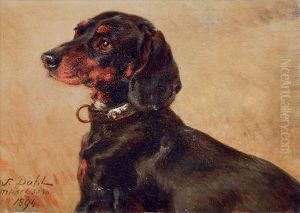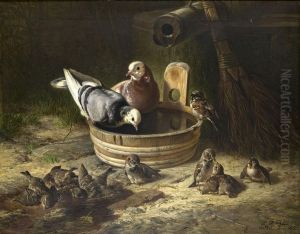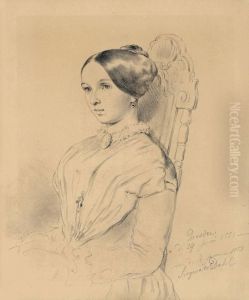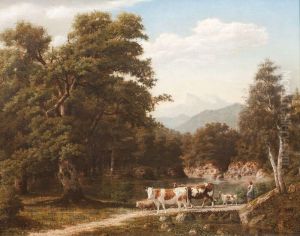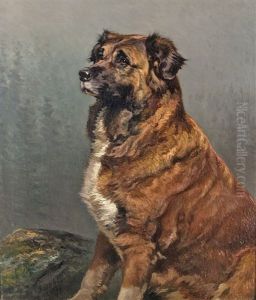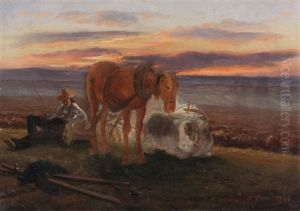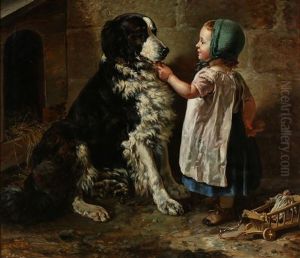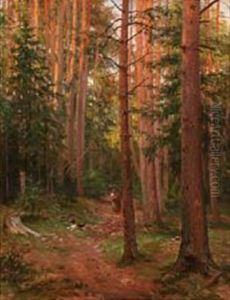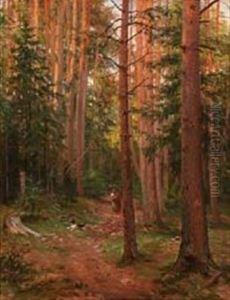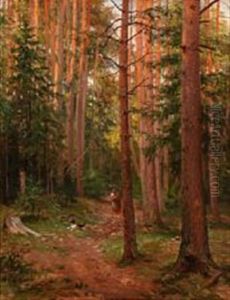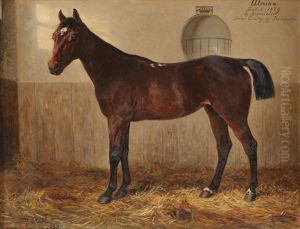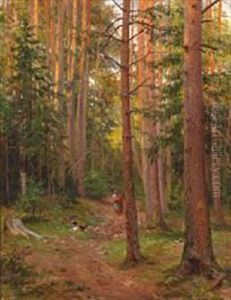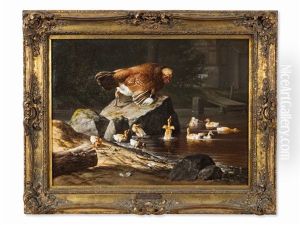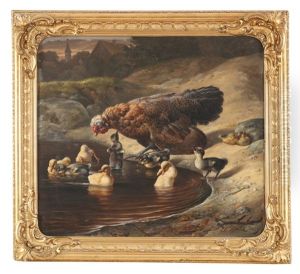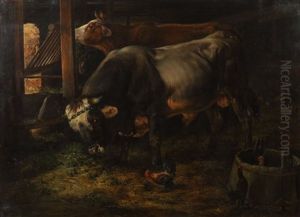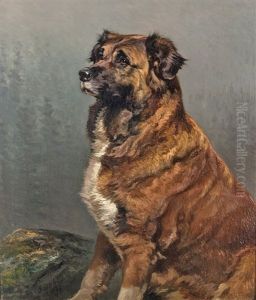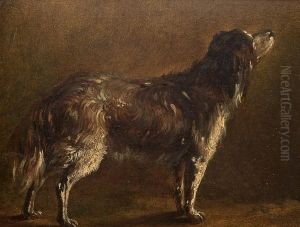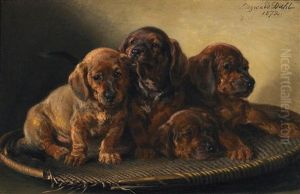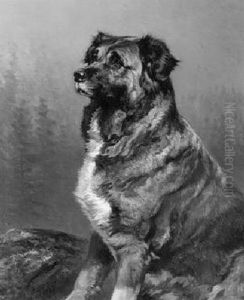Siegwald Johannes Dahl Paintings
Siegwald Johannes Dahl was a significant figure in the world of 19th-century art, known for his contributions as a landscape and animal painter. Born on February 10, 1827, in Dresden, Germany, he was part of a notable artistic lineage, being the son of the famous Norwegian landscape painter, Johan Christian Clausen Dahl, who is often considered a forefather of Norwegian romanticist landscape painting. This familial background provided Siegwald with a rich artistic heritage and a strong foundation in the principles of painting from an early age.
Dahl's education and artistic development were deeply influenced by his father's connections and the vibrant artistic community in Dresden. He initially studied under his father's guidance before furthering his education at the Dresden Academy of Fine Arts. His early works were heavily influenced by the romanticist tradition, focusing on the interplay between light and nature, capturing the sublime beauty of the natural world.
Throughout his career, Dahl developed a particular interest in animal painting, which became his specialty. He was known for his ability to depict animals with remarkable realism and emotional depth, often placing them within dramatic and atmospheric landscapes. His works not only showcased his technical skill but also reflected his profound appreciation for nature and its creatures.
Dahl's contributions to art were recognized in his time, and he became a respected member of the artistic community in Dresden. His paintings were exhibited in various prestigious venues, and he gained patrons across Europe. Despite the acclaim, Dahl remained dedicated to his craft, continuously exploring new techniques and subjects throughout his life.
Siegwald Johannes Dahl passed away on December 24, 1902, leaving behind a legacy that has continued to influence the field of landscape and animal painting. His works are celebrated for their technical proficiency, emotional resonance, and the artist's unique ability to capture the essence of his subjects. Today, his paintings can be found in museums and private collections, appreciated by art lovers and scholars alike for their contribution to the 19th-century art movement.
